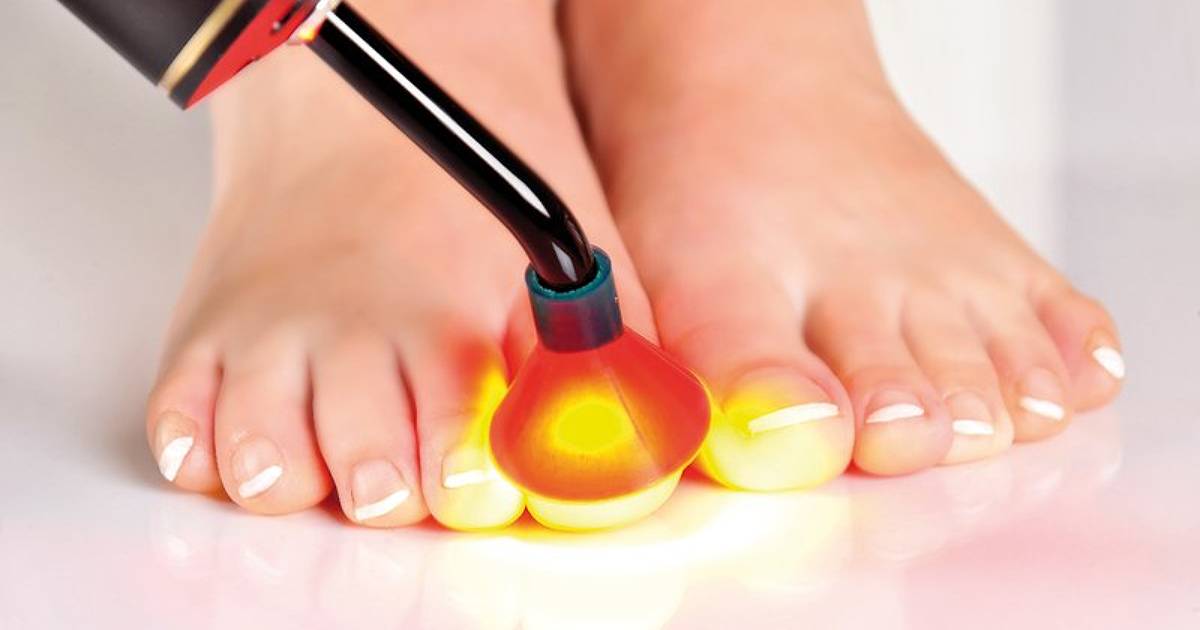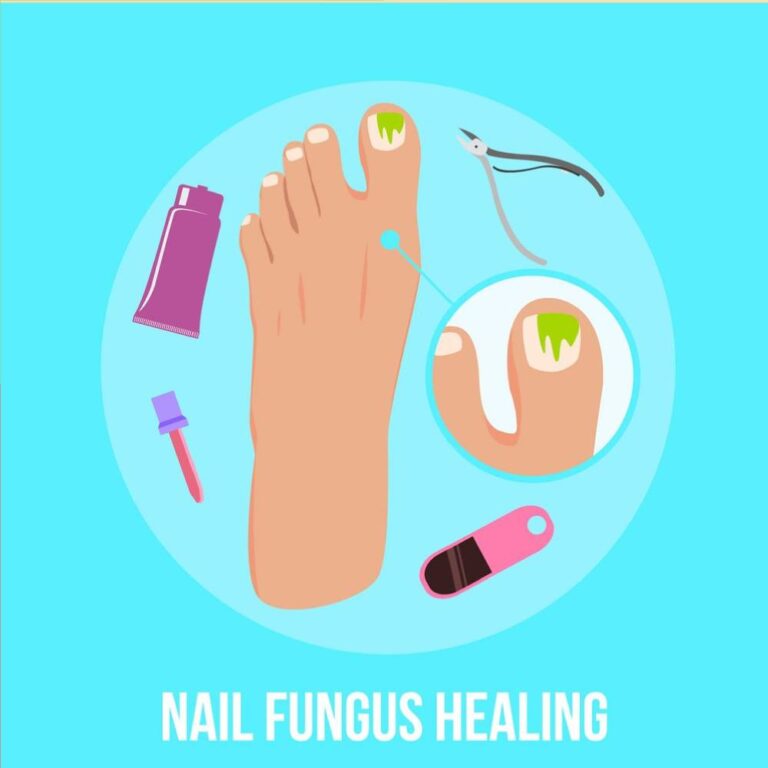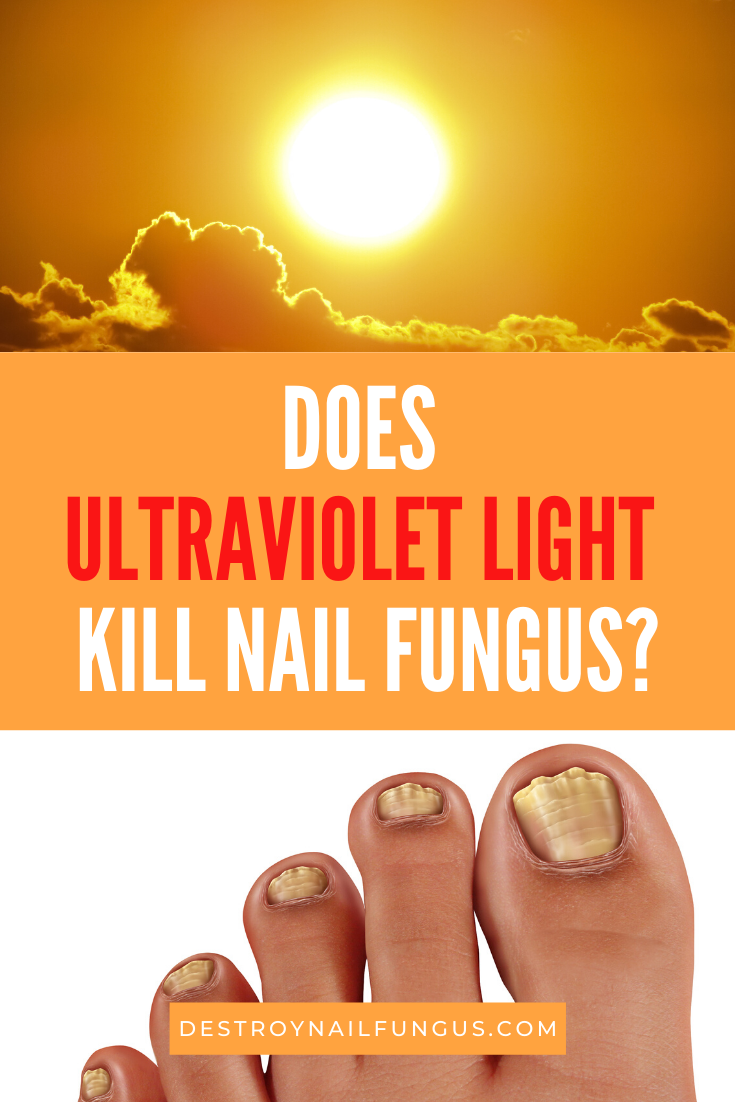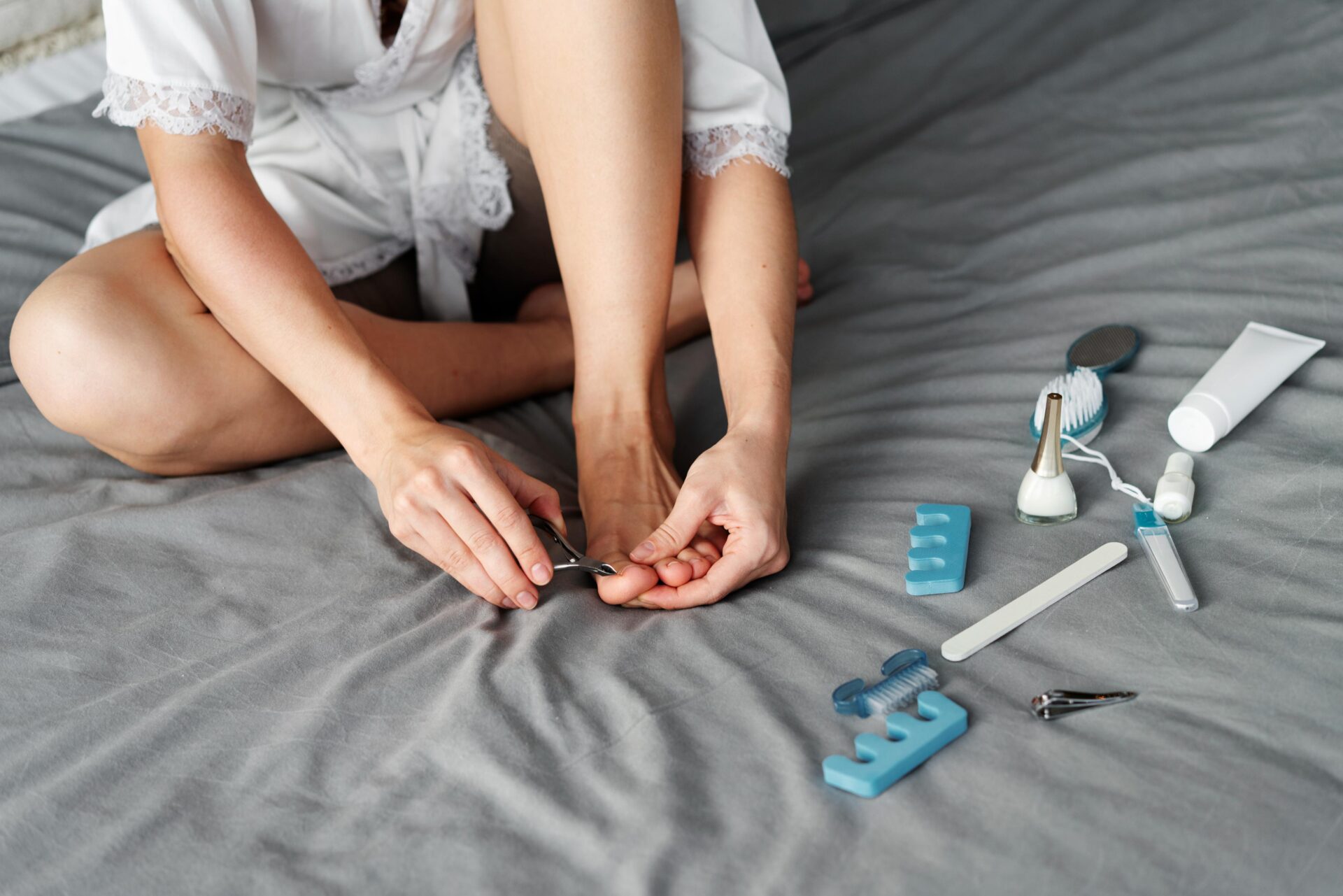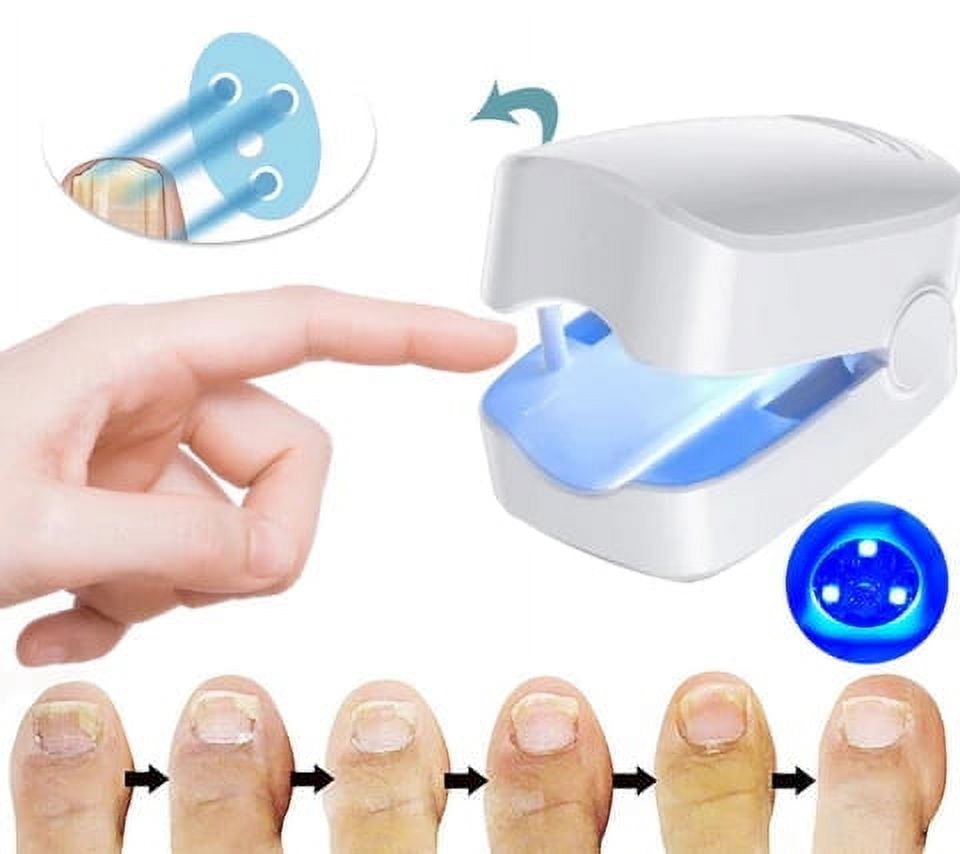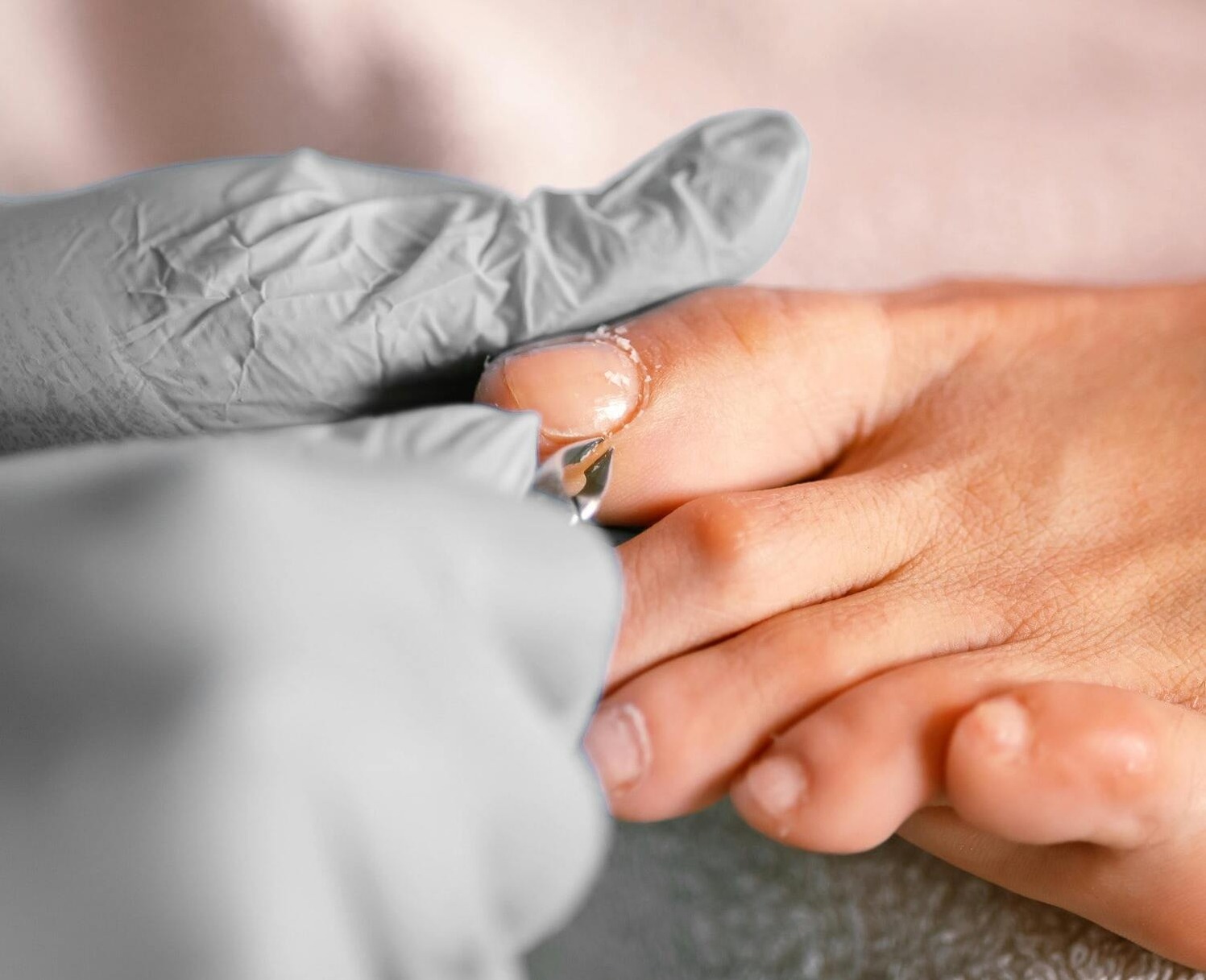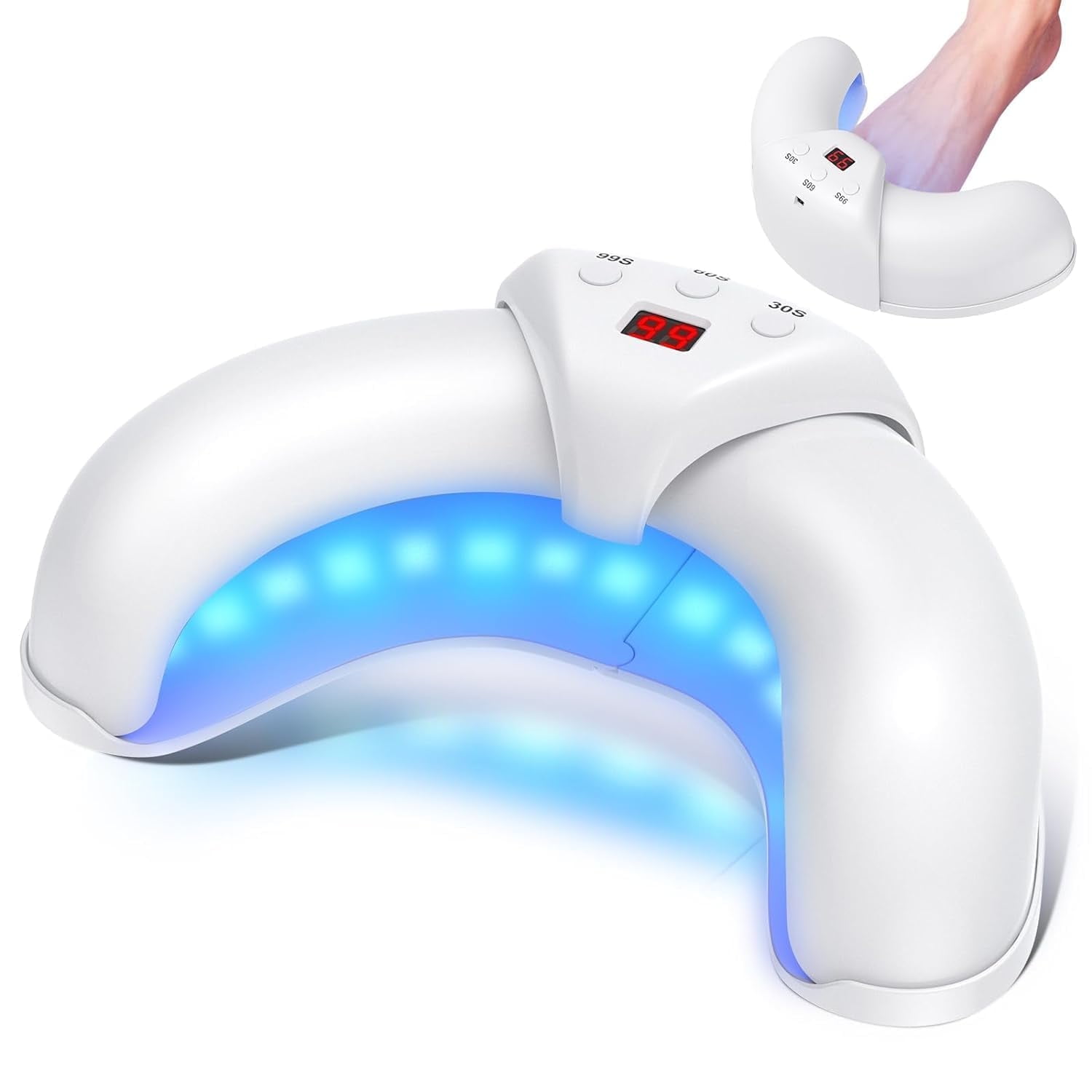Can Uv Light Kill Toenail Fungus

Imagine the scene: sandals are back in vogue, and you're dreaming of sunny beach days. But there’s a tiny, persistent cloud on the horizon – a discolored, thickened toenail that whispers of discomfort and self-consciousness. Could the answer to this common problem be as simple as shining a light on it?
The potential of ultraviolet (UV) light as a treatment for onychomycosis, or toenail fungus, is a growing area of interest. While it's not a widely established solution yet, the scientific community is actively exploring its effectiveness, safety, and optimal application.
The Fungal Foe: Understanding Toenail Fungus
Toenail fungus is a pervasive issue, affecting millions worldwide. It's not merely a cosmetic problem; it can cause pain, discomfort, and even spread to other nails or skin if left untreated.
The infection typically starts as a small white or yellow spot under the nail, gradually spreading and causing the nail to thicken, discolor, and potentially crumble. Several types of fungi, most commonly dermatophytes, are responsible for this unwelcome invasion.
Traditional Treatments and Their Limitations
Traditional treatments for toenail fungus include topical antifungal creams and oral medications. While effective in some cases, these options have their drawbacks.
Topical treatments often struggle to penetrate the nail bed effectively, leading to lengthy treatment periods and potentially limited success. Oral medications, while more potent, can carry the risk of side effects and may not be suitable for everyone, especially those with pre-existing liver conditions.
"The challenge with topical treatments is penetration," explains Dr. Anya Sharma, a dermatologist specializing in fungal infections. "The nail plate acts as a barrier, preventing the medication from reaching the site of infection effectively."
UV Light: A Potential Game Changer?
UV light, particularly UVC, has been used for decades as a powerful disinfectant, effectively killing bacteria, viruses, and, importantly, fungi. The premise behind using UV light for toenail fungus is that it can directly target and destroy the fungal organisms responsible for the infection.
Researchers are investigating various UV light delivery methods, including portable devices that emit UV light directly onto the affected nail. The hope is to provide a more targeted and potentially less invasive treatment option.
The Science Behind the Light
UV light works by disrupting the DNA and RNA of microorganisms, rendering them unable to reproduce and ultimately leading to their death. In the context of toenail fungus, the UV light aims to damage the fungal cells within the nail bed, halting the infection's progression.
However, the effectiveness of UV light depends on several factors, including the wavelength of the UV light, the intensity of the exposure, and the duration of treatment. Proper dosage and safety measures are crucial to prevent skin damage and ensure the treatment's efficacy.
Current Research and Findings
While the research is still evolving, some studies have shown promising results regarding the use of UV light for treating toenail fungus. Early studies suggest that specific UV wavelengths can effectively inhibit fungal growth in laboratory settings.
However, translating these findings to real-world clinical applications requires further investigation. More rigorous clinical trials are needed to determine the optimal UV dosage, treatment duration, and long-term efficacy in treating toenail fungus in humans.
According to a 2023 study published in the Journal of the American Academy of Dermatology, "While preliminary data suggests potential, further research is warranted to establish the efficacy and safety of UV light therapy for onychomycosis."
Safety Considerations and Potential Risks
Safety is paramount when it comes to UV light treatment. Excessive exposure to UV radiation can damage skin cells and increase the risk of skin cancer.
Therefore, any UV light device intended for treating toenail fungus must be designed with safety features, such as automatic shut-off timers and protective eyewear. It's crucial to follow the manufacturer's instructions carefully and to consult with a healthcare professional before starting any UV light treatment.
It is also important to note that not all UV light is the same. UVC light, while effective at killing microorganisms, is also the most dangerous type of UV radiation. Therefore, devices emitting UVC light must be used with extreme caution and under strict supervision.
The Role of a Healthcare Professional
Self-treating toenail fungus with UV light devices is not recommended. It's essential to seek professional guidance from a dermatologist or podiatrist to determine the underlying cause of the nail problem and to rule out other potential conditions.
A healthcare professional can properly diagnose the condition, assess the severity of the infection, and recommend the most appropriate treatment plan. They can also monitor the progress of the treatment and address any potential side effects or complications.
The Future of UV Light Therapy for Toenail Fungus
Despite the challenges, the potential of UV light therapy for toenail fungus remains promising. As technology advances and research progresses, we may see the development of more effective and safer UV light devices for treating this common condition.
Researchers are also exploring combination therapies that combine UV light with other antifungal treatments. This approach could potentially enhance the effectiveness of the treatment and reduce the treatment duration.
The goal is to develop a treatment option that is not only effective but also convenient, affordable, and accessible to everyone affected by toenail fungus. Imagine a world where clear, healthy toenails are within everyone's reach, free from the burden of fungal infections.
A Beacon of Hope
While UV light therapy for toenail fungus is still in its early stages, it represents a beacon of hope for those seeking alternative treatment options. As research continues and technology evolves, this innovative approach may one day become a standard part of the arsenal against this persistent and bothersome condition.
For now, the key is to stay informed, consult with healthcare professionals, and approach any new treatment with caution and realistic expectations. The path to healthy, fungus-free toenails may be illuminated by the potential of UV light, but it requires careful navigation and a commitment to informed decision-making.


